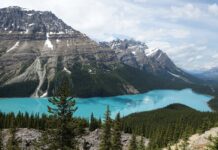It may have been a while since you have been to a national park in the United States. Maybe it’s your first time visiting one. You might not be expecting to get to a US national park for some time to come.
Use Common Sense and Be Courteous in National Parks
Whatever the case may be, it’s also good to do some homework before any trip. It’s always good to use common sense and be courteous whenever you find yourself in a new situation.
The United States of America has a total of 419 national parks. They stretch across over 84 million acres in every state and even extend into the U.S. territories with national parks in American Samoa, Guam, Puerto Rico, and the U.S. Virgin Islands. In other words, travelers are offered a lot of choices.
Mind you, the freedom of choice regarding these protected lands also means that there is a lot of potential for real abuse. Thus, every traveler needs to be what some experts call “a responsible park visitor.” Don’t stress though because it is very easy to set a good example for other visitors. All one needs to do is simply follow a simple shortlist of suggestions. Here then, are the 10 dos and don’t for travelers visiting US national parks:
The Dos And Don’ts For Travelers
1. Do Make All Your Plans Well Ahead Of Time
The time of year one plans to visit an American national park is crucial. You could end up visiting during the height of tourist season and weather the crowds or show up at a time when there are unexpected closures due to the season or inclement weather. Make all your reservations in advance to ensure your spot. If you’re traveling with a dog, be certain to check if the parks you visit are pet-friendly.
2. Do Be Patient And Flexible
Be flexible and patient whenever you visit any national park, especially if you arrive during peak season. After all, it is then that you could run into heavy traffic and thereby fall behind on your schedule. Remember to give yourself extra time for this type of problem when you schedule your visit. More importantly, remember that the national park is not going anywhere. You really don’t need to rush.
3. Don’t Get Too Close
Be sure to read and follow any posted directions in the park. Use some common sense and follow the signage not only when it comes to wildlife but also any natural hazard such as fast-moving water or cliffs. Keep a safe distance from steep drop-offs and animals.
4. Don’t Stray From The Designated Roads And Trails
Do not walk or drive off of designated roads. hiking trails, or even parking lots. Owners of off-road vehicles might be tempted to head out off the designated paths but this significantly increases the chance of personal injury and/or damage to a protected area. Damaging protected flora or fauna could easily lead to trouble with the law too.
5. Don’t Leave Anything Behind When You Leave
The Scouts have a training program called “Leave No trace.” The gist of this “Leave No trace” concept is that when you go hiking and camping in the wilderness you “leave no trace” that you were there. Indeed, the only thing you should leave behind when you visit a U.S. national park is your footprints. Keep all your trash in a bag or your pockets. Keep track of all your personal belonging as well. By leaving no trace of your visit you are doing your best to make sure that the park remains as pristine as when you arrived.
6. Do Speak To A Park Ranger
Let’s be honest; park rangers get paid good money. They are there to help you make the most of your visit and to avoid any potential issues. If you have any concerns or questions or even need recommendations of some sort, consult the park rangers there for proper guidance. Park rangers can be sure that you are up to date on such important topics as closures within the park and even tell you the best places to see specific kinds of wildlife.
7. Do Take A Lot Of Photos
Take a lot of photographs. Take as many as you want. In fact, not only are pictures the best souvenir but taking photos is perhaps the safest way to get up close to wildlife. Additionally, if you simply must have physical proof of your visit this will also make you feel less likely to be tempted to collect flowers, rocks, stones, shells, or any small living creatures. (That is another don’t).
8. Don’t Make A Lot Of Noise
National parks have overnight quiet hours. Nevertheless, even during the day, it’s a good idea to keep your noise level to a minimum. Keep your loud music to your living room at home and avoid speakerphone conversations as well. Relax and enjoy the sounds of nature.
9. Do Pay Attention To The Speed Limits And Other Signs
Along with all the signage you will find in the park you should also be sure to pay attention to all the posted speed limits as well. Be sure to pull over to let faster traffic pass when on the scenic routes too. That’s why the shoulders are there. This is especially important if you’re driving a larger vehicle or an RV.
10. Don’t Take Park Property Home
As noted in an earlier rule, you should not take home any flowers, plants, rocks, shells, stones, or any living creature with you when you leave. They are not souvenirs. While it might seem fairly harmless for you to take home one shell or rock, you must imagine if all the millions of visitors who come to these parks would do that.
So there you have it, fellow travelers, 10 dos and don’ts for travelers visiting U.S. national parks. A little bit of common sense and courteousness is all it takes. Have a good trip!






















